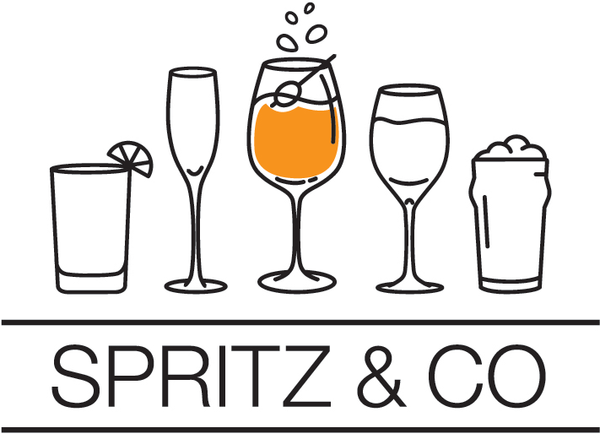NEBBIOLO
Nebbiolo is a red Italian wine grape variety predominately associated with the Piedmont region where it makes the Denominazione di Origine Controllata e Garantita (DOCG) wines of Barolo, Barbaresco, Gattinara and Ghemme. Nebbiolo is thought to derive its name from the Piedmontese word nebbia which means "fog." During harvest, which generally takes place late in October, a deep, intense fog sets into the Langhe region where many Nebbiolo vineyards are located. Alternative explanations refers to the fog-like milky veil that forms over the berries as they reach maturity or that perhaps the name is derived instead from the Italian word nobile, meaning noble. Nebbiolo produces lightly coloured red wines can be highly tannic in youth with scents of tar and roses. As they age, the wines take on a characteristic brick-orange hue at the rim of the glass and mature to reveal other aromas and flavors such as violets, tar, wild herbs, cherries, raspberries, truffles, tobacco, and prunes. Nebbiolo wines can require years of aging to balance the tannins with other characteristics.
History
It is believed that Nebbiolo is indigenous to the Piedmont region though some DNA evidence suggest that it may have originated in Lombardy. In the 1st century AD, Pliny the Elder noted the exceptional quality of the wine produced in Pollenzo region located northwest of what is now the Barolo DOCG zone.
The grape first captured attention outside of Piedmont in the 18th century, when the British were looking for alternative wine sources to Bordeaux due to prolong political conflicts with the French. However the lack of easy transport from Piedmont to London would keep the Piedmontese wine from having the enduring relationship with British connoisseurship that is associated with Bordeaux, Port and Sherry. Nonetheless, plantings of Nebbiolo continued to growing during the 19th century until the phylloxera epidemic hit. With vast swaths of vineyards devastated by the louse, some vineyard owners decided to replant with different grape varieties with Barbera being a significant beneficiary. Today, Nebbiolo covers less than 6% of Piedmont vineyards.
Wine regions
Nebbiolo is found predominately in the northwest Italian region of Piedmont where it forms the base of many of the regions most well known Denominazione di origine controllata (DOC) and DOCG wines including Barolo, Barbaresco, Gattinara, Ghemme and Nebbiolo d'Alba. Despite the prestige and acclaim of Nebbiolo based wine, it is far from being the most widely grown grape in Piedmont. In 2000, there were just under 12,700 acres (5,000 hectares) of Nebbiolo producing 125,000 hectoliters of wine which accounted for a little over 3% of Piedmont's entire production. In contrast, there is nearly 15 times as much Barbera planted in the region. Outside of Piedmont, it is found in the neighboring regions of the Val d'Aosta region of Donnaz and Valtellina and Franciacorta in Lombardy.
Barolo & Barbaresco
The Piedmont region is considered the viticultural home of Nebbiolo and it is where the grape's most notable wines are made. The consistent continental climate of the region, coupled with the influences of Tanaro river produces a unique terroir for Nebbiolo that is not easily replicated in other parts of the world. The two most well known Nebbiolo based wines are the DOCG wines of the Barolo & Barbaresco zones near Alba. Barbaresco is considered the lighter of the two and has less stringent DOCG regulations, with the normale bottlings requiring only 9 months in oak and 21 months of total aging and the reserva bottlings requiring 45 total months of aging. In contrast the Barolo DOCG requires 1 year in oak and 3 years total aging for normale bottlings and 57 months total aging for riserva. The minimum alcohol levels for the two region vary slightly with Barbaresco requiring a minimum of 12.5% and Barolo 13%. (However, Barolo, as of 1999, now only requires a minimum of 12.5% as well)
The Barolo zone is three times the size of the Barbaresco zone with the different communes producing Nebbiolo based wines with noticeable distinctions among them
Viticulture and winemaking
Compared to the annual growth cycle of other Piedmontese grape varieties, Nebbiolo is one of the first varieties to bud and last variety to ripen with harvest taking place in mid to late October. In some vintages, producers are able to pick and complete fermentation of their Barbera and Dolcetto plantings before Nebbiolo is even harvested. To aid in ripening, producers will often plant Nebbiolo in the most favoured sites on south and south-western facing slopes, which give the grape more access to direct sunlight. The most ideal location is at an elevation between 150 and 300 meters and must provide some natural shelter from wind.
Blending
In the Piedmont region, there is a long history of blending other grape varieties with Nebbiolo in order to add color and/or soften the grape's harsh tannins.
Wines made from Nebbiolo are characterized by their ample amounts of acidity and tannin. Most examples are wines built for aging and some of the highest quality vintages need significant age (at least a decade or more) before they are palatable to many wine drinkers and can continue to improve in the bottle for upward of 30 years. As Nebbiolo ages, the bouquet becomes more complex and appealing with aromas of tar and roses being the two most common notes. Other aromas associated with Nebbiolo include dried fruit, damsons, leather, licorice, mulberries, spice as well dried and fresh herbs. While Barolo & Barbaresco tend to be the heaviest and most in need of aging, wines made in the modernist style are becoming more approachable at a young age.
